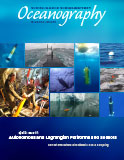First Paragraph
Oceanography relies heavily on observations to fuel new ideas and drive advances, creating a strong coupling between the science and the technological developments that enable new measurements. Novel observations, such as those that resolve new properties or scales, often lead to advances in understanding. Physical, biological, and chemical processes unfold over a broad range of scales—seconds to decades and millimeters to ocean basins—with critical interactions between scales. Observational studies work within a tradespace that balances spatial and temporal resolution, scope, and resource constraints. New platforms and sensors, along with the novel observational approaches they enable, address this challenge by providing access to an expanding range of temporal and spatial scales.

